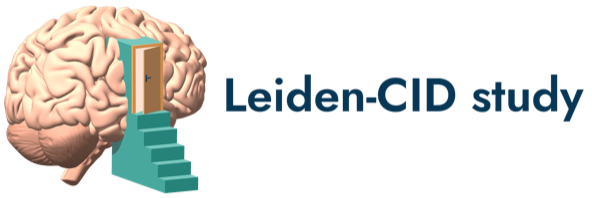-
measure Twin Social Skills or Differences
Study: L-CID Mode of collection: SelfAdministeredQuestionnaire Available measurements: Early Childhood Cohort ECC - T1 ECC - T2 ECC - T3
Middle Childhood Cohort MCC - T1 MCC - T2The Twin Social Skills or Differences Questionnaire is a self-developed questionnaire that consists of 8 (generally open) questions about the perceived differences between the twins in terms of character and social skills.Created October 17, 2024 • Updated October 20, 2024 -
measure Wechsler Preschool and Primary Scale of Intelligence (WPPSI)
Study: L-CID Mode of collection: MeasurementsAndTests Behavioral/cognitive task Available measurements: Early Childhood Cohort ECC - T2 ECC - T3 ECC - T4The Wechsler Preschool and Primary Scale of Intelligence (WPPSI) is an IQ test for children 2.5 to 7.25 years of age to determine general intelligence. It uses subtests to determine a child's Verbal and Performance IQ scores, as well as processing speed.Created October 17, 2024 • Updated October 20, 2024 -
measure Anthropometrics - Headcircumference, height, weight
Study: L-CID Mode of collection: MeasurementsAndTests Anthropometrics/Body measures Available measurements: Early Childhood Cohort ECC - T2 ECC - T3 ECC - T4 ECC - T5 ECC - T6
Middle Childhood Cohort MCC - T1 MCC - T2 MCC - T3 MCC - T4 MCC - T5 MCC - T6 MCC - T7Anthropometrics measured included the circumference of the child's head, the child's height, and the child's weight.Created October 17, 2024 • Updated October 20, 2024 -
measure Stop-Signal Task - Cars
Study: L-CID Mode of collection: MeasurementsAndTests Behavioral/cognitive task Available measurements: Early Childhood Cohort ECC - T1 ECC - T2 ECC - T3 ECC - T4The Stop-Signal Task - Cars aims to measure behavioral inhibition by having the child inhibit their reaction in response to a quickly appearing signal. During the task, the child is instructed to touch a picture of a car appearing on the screen as quickly as possible, and to withhold touching the screen when a "Stop" sign appears. The child has to respond...Created October 17, 2024 • Updated October 20, 2024 -
measure Brief Symptom Inventory (BSI)
Study: L-CID Mode of collection: SelfAdministeredQuestionnaire Available measurements: Early Childhood Cohort ECC - T1 ECC - T2 ECC - T3 ECC - T4 ECC - T5 ECC - T6 ECC - T6-Covid
Middle Childhood Cohort MCC - T1 MCC - T2 MCC - T3 MCC - T4 MCC - T5 MCC - T5-Covid MCC - T6 MCC - T7The Brief Symptom Inventory (BSI) assesses the presence of several psychiatric symptoms. It consists of 53 items covering nine symptom dimensions: Somatization, Obsession-Compulsion, Interpersonal Sensitivity, Depression, Anxiety, Hostility, Phobic anxiety, Paranoid ideation and Psychoticism; and three global indices of distress: Global Severity Index,...Created October 17, 2024 • Updated October 20, 2024 -
measure Hair samples - Dehydroepiandrosterone (DHEA)
Study: L-CID Mode of collection: MeasurementsAndTests Biological sample/measurement Available measurements: Early Childhood Cohort ECC - T2 ECC - T3 ECC - T4 ECC - T6
Middle Childhood Cohort MCC - T2 MCC - T3 MCC - T4A hair sample is a collection of hair strands, which are usually cut from a person's head. Hair samples usually contain hair that has grown over the last 12 months.Created October 17, 2024 • Updated October 20, 2024 -
measure Strengths and Difficulties Questionnaire (SDQ)
Study: L-CID Mode of collection: SelfAdministeredQuestionnaire Available measurements: Early Childhood Cohort ECC - T1 ECC - T2 ECC - T3 ECC - T4 ECC - T5 ECC - T6 ECC - T6-Covid
Middle Childhood Cohort MCC - T1 MCC - T2 MCC - T3 MCC - T4 MCC - T5 MCC - T5-Covid MCC - T6 MCC - T7The Strengths and Difficulties Questionnaire (SDQ) is a brief questionnaire for assessing the psychosocial adjustment of children and adolescents. Versions are available for parents and teachers of 4- to 16-year-olds, and a nearly identical version can be completed independently by 11- to 16-years olds. The SDQ differs from related instruments in that it...Created October 17, 2024 • Updated October 20, 2024 -
measure Cheating - Ball Throwing
Study: L-CID Mode of collection: MeasurementsAndTests Behavioral/cognitive task Available measurements: Early Childhood Cohort ECC - T1The Cheating - Ball Throwing task aims to measure behavioral control by giving the child an opportunity to cheat while throwing a ball. During the game, children have to stay behind a line and can throw each ball only once. After the instructions, children practice the game with the research assistant. After the practice session, the research assistant...Created October 17, 2024 • Updated October 20, 2024 -
measure E-diary - Tympanic Membrane Temperature
Study: L-CID Mode of collection: MeasurementsAndTests Biological sample/measurement Available measurements: Early Childhood Cohort ECC - T1 ECC - T2 ECC - T3 ECC - T5
Middle Childhood Cohort MCC - T1 MCC - T2 MCC - T3The E-diary Daily Structure and Activities of the Children - Ear Temperature assesses the children's ear temperature through self-reporting in the Upinion smartphone app.Created October 17, 2024 • Updated October 20, 2024 -
measure MyChild - Empathy
Study: L-CID Mode of collection: SelfAdministeredQuestionnaire Available measurements: Early Childhood Cohort ECC - T2 ECC - T3 ECC - T4 ECC - T5 ECC - T6
Middle Childhood Cohort MCC - T1 MCC - T2 MCC - T3 MCC - T4 MCC - T5 MCC - T6The MyChild questionnaire aims to measure conscience, moral development, and internalized compliance. It consists of 100 items over 10 different subscales that are rated on an 8-point Likert scale.Created October 17, 2024 • Updated October 20, 2024 -
measure Observation Evening meal
Study: L-CID Mode of collection: Observation Available measurements: Early Childhood Cohort ECC - T1 ECC - T2 ECC - T3 ECC - T5
Middle Childhood Cohort MCC - T1 MCC - T2 MCC - T3The Observation Evening Meal task aims to measure parental sensitivity by observing parent-child interactions during the evening meal.Created October 17, 2024 • Updated October 20, 2024 -
measure Zygosity (questionnaire)
Study: L-CID Mode of collection: SelfAdministeredQuestionnaire Available measurements: Early Childhood Cohort ECC - T1 ECC - T2
Middle Childhood Cohort MCC - T1The Zygosity questionnaire asks parents of twin pairs about the resemblance between the twins to determine whether the twin pair is mono- or dizygotic. This questionnaire consists of 10 questions: 6 items about physical similarities between the twin and 4 items about confusion in identifying the twins by parents and others.Created October 17, 2024 • Updated October 20, 2024 -
measure Investment Models Scale (IMS)
Study: L-CID Mode of collection: SelfAdministeredQuestionnaire Available measurements: Early Childhood Cohort ECC - T1 ECC - T2
Middle Childhood Cohort MCC - T1The Investment Models Scale (IMS) consists of two sets of items associated with the four central constructs of the Investment Model (IM): facet items and global items. Facet items measure the antecedents of commitment - satisfaction, quality of alternatives and investment size. These facet items are included in the IMS to activate in memory and illustrate...Created October 17, 2024 • Updated October 20, 2024 -
measure Zygosity (DNA)
Study: L-CID Mode of collection: MeasurementsAndTests Biological sample/measurement Available measurements: Early Childhood Cohort ECC - T2
Middle Childhood Cohort MCC - T1Zygosity typing based on micro-satellite markers, single nucleotide polymorphisms (SNP), or variable number (short) tandem repeats (VNTRs).Created October 17, 2024 • Updated October 20, 2024 -
measure Sleep patterns - Actigraph
Study: L-CID Mode of collection: MeasurementsAndTests Biological sample/measurement Available measurements: Early Childhood Cohort ECC - T1 ECC - T2 ECC - T3 ECC - T5 ECC - T6
Middle Childhood Cohort MCC - T1 MCC - T2 MCC - T3 MCC - T5The Actigraph (Motionlogger) is a device used to determine the sleep patterns of a child during the night.Created October 17, 2024 • Updated October 20, 2024 -
measure Interpersonal Reactivity Index (IRI)
Study: YOUth Mode of collection: SelfAdministeredQuestionnaire Available measurements: Baby and Child 3 years 6 years
Child and Adolescent 9 years 12 yearsThe Interpersonal Reactivity Index (IRI) is a measure of dispositional empathy that takes as its starting point the notion that empathy consists of a set of separate but related constructs. The instrument contains four seven-item subscales, each tapping into a separate facet of empathy.Created October 17, 2024 • Updated October 20, 2024 -
measure Strengths and Difficulties Questionnaire (SDQ)
Study: YOUth Mode of collection: SelfAdministeredQuestionnaire Available measurements: Baby and Child 3 years 6 years
Child and Adolescent 9 years 12 yearsThe Strengths and Difficulties Questionnaire (SDQ) is a brief questionnaire for assessing the psychosocial adjustment of children and adolescents. Versions are available for parents and teachers of 4- to 16-year-olds, and a nearly identical version can be completed independently by 11- to 16-years olds. The SDQ differs from related instruments in that it...Created October 17, 2024 • Updated October 20, 2024 -
measure Temperament in Middle Childhood Questionnaire - Revised Short Form (TMCQ-R-SF)
Study: YOUth Mode of collection: SelfAdministeredQuestionnaire Available measurements: Baby and Child 5 months 10 months 3 years 6 yearsThe Temperament in Middle Childhood Questionnaire (TMCQ) is a highly differentiated assessment of temperament in middle childhood. Temperament dimensions for which TMCQ scales have been created were developed and adapted from the Children’s Behavior Questionnaire (CBQ: Rothbart, 2001), Hampton Individual Differences Questionnaire (Victor & Baker,...Created October 17, 2024 • Updated October 20, 2024 -
measure Gaze Cueing experiment
Study: YOUth Mode of collection: MeasurementsAndTests Eyetracking Available measurements: Baby and Child 5 months 10 months 3 years 6 years
Child and Adolescent 9 years 12 yearsThe Gaze Cuing experiment is an eye-tracking task that measures a participant's sensitivity to another person's gaze direction as a possible cue to predict the location of a next event. Sensitivity to gaze direction is taken as a marker of social competence. In the Social Gaze Task, children see a face with direct gaze, followed by an eye gaze shift to...Created October 17, 2024 • Updated October 20, 2024 -
measure Hair sample
Study: YOUth Mode of collection: MeasurementsAndTests Biological sample/measurement Available measurements: Baby and Child 30 weeks 10 months 3 years 6 years
Child and Adolescent 9 years 12 yearsA hair sample is a collection of hair strands, which are usually cut from a person's head. Hair samples usually contain hair that has grown over the last 12 months.Created October 17, 2024 • Updated October 20, 2024


